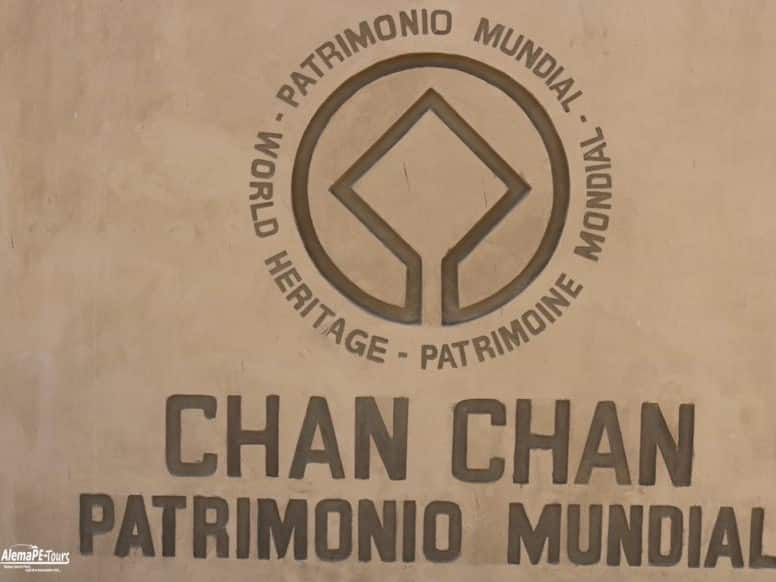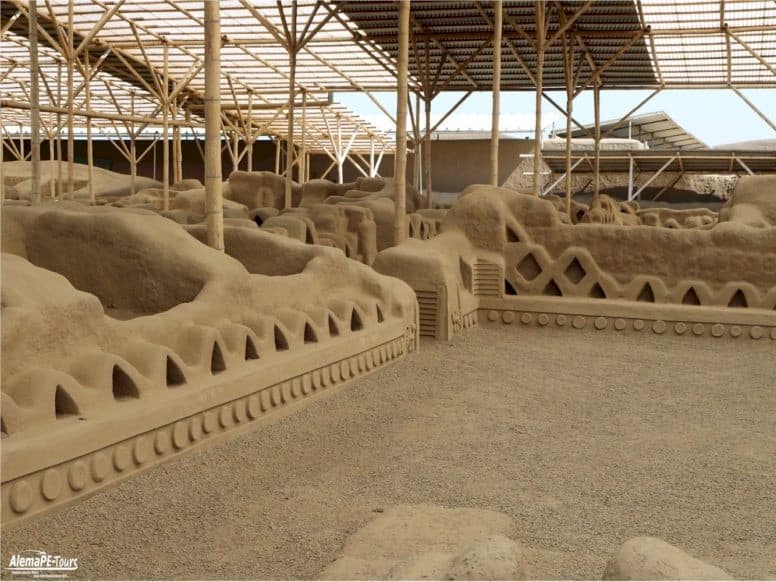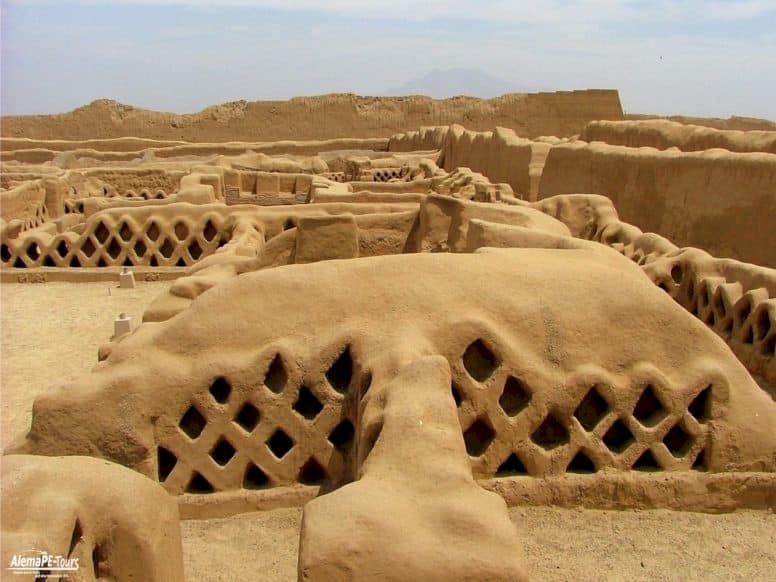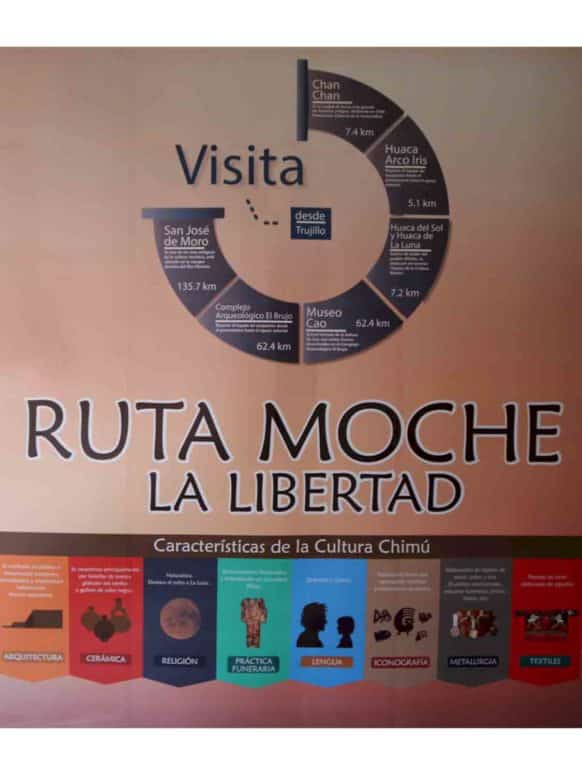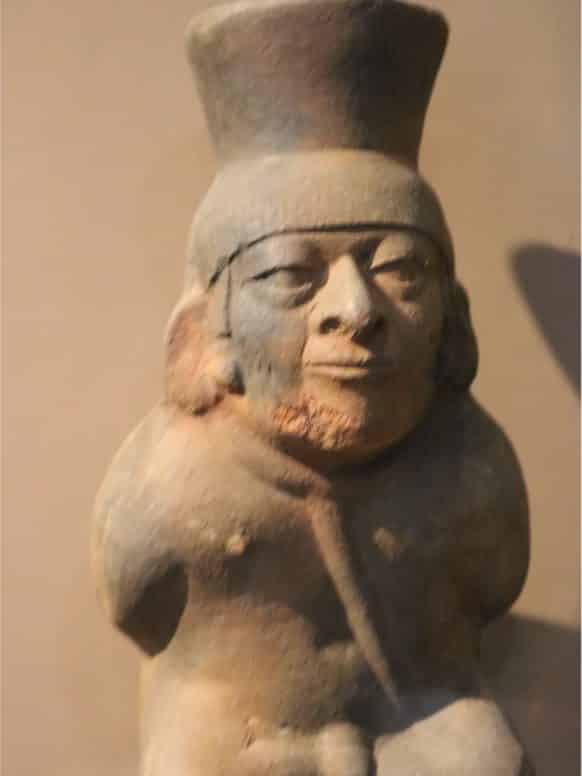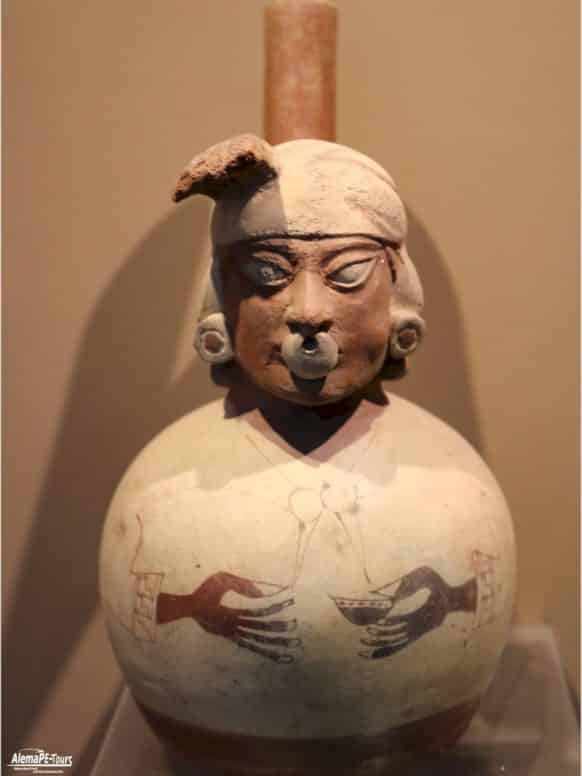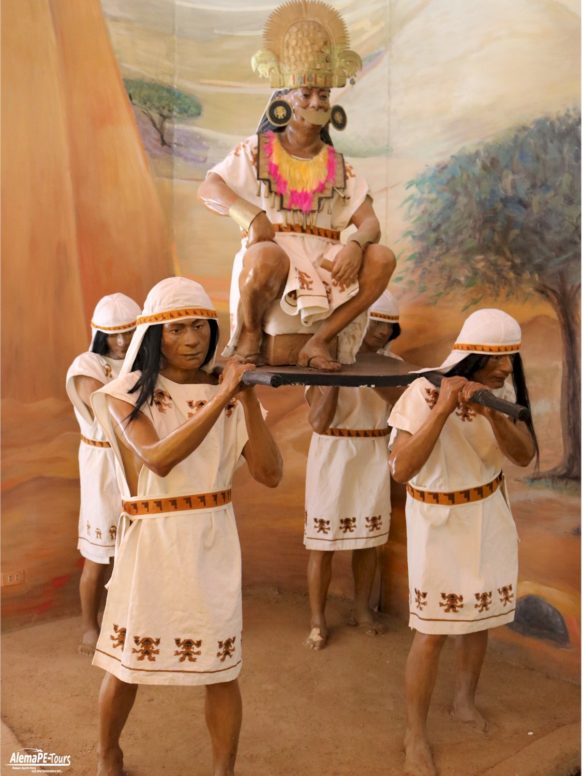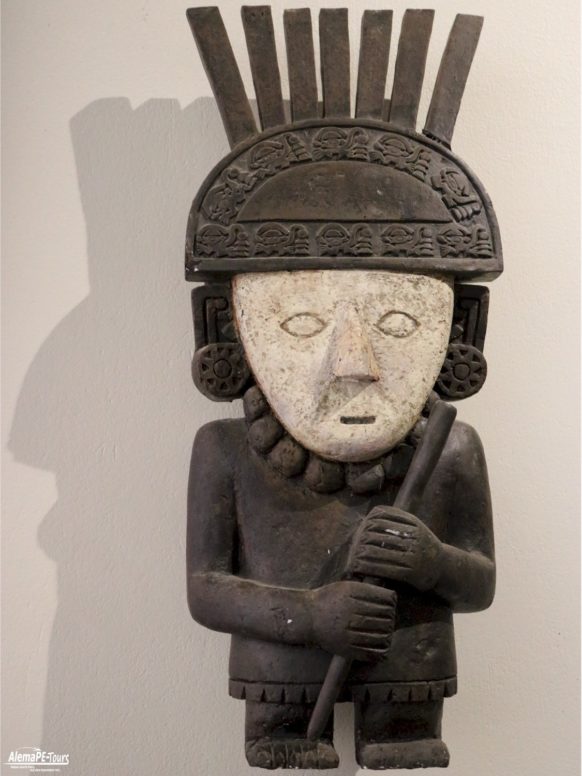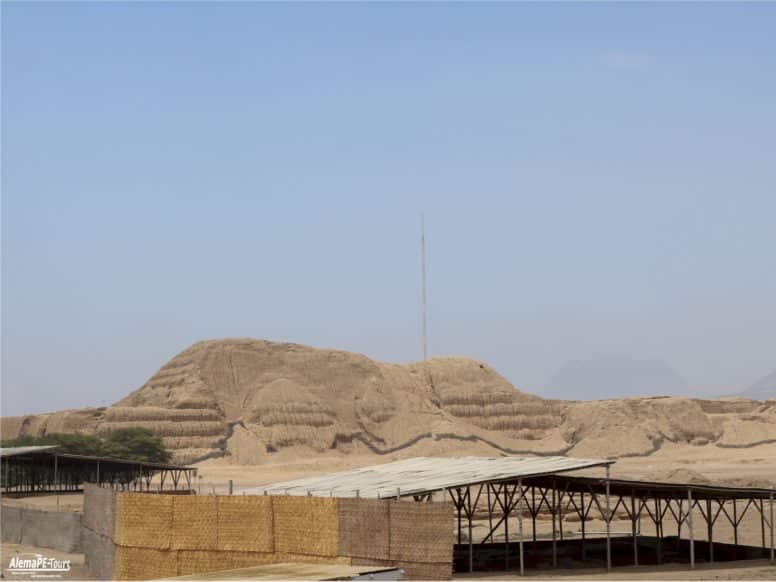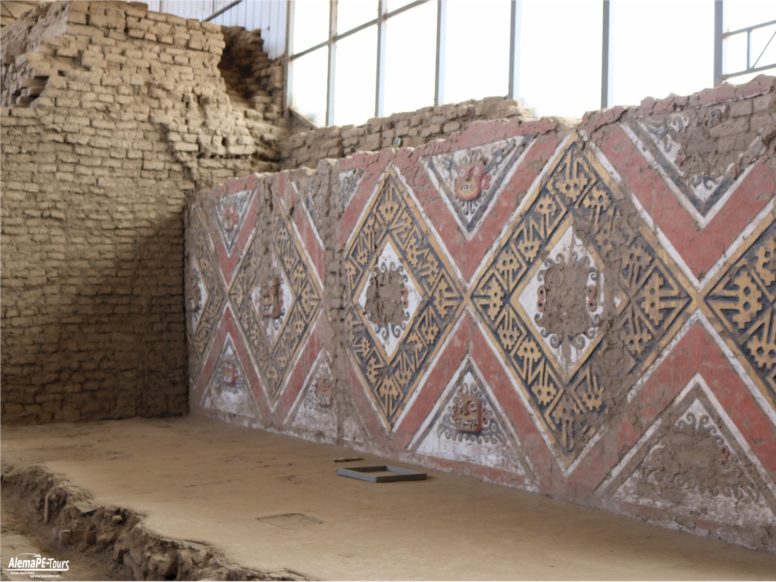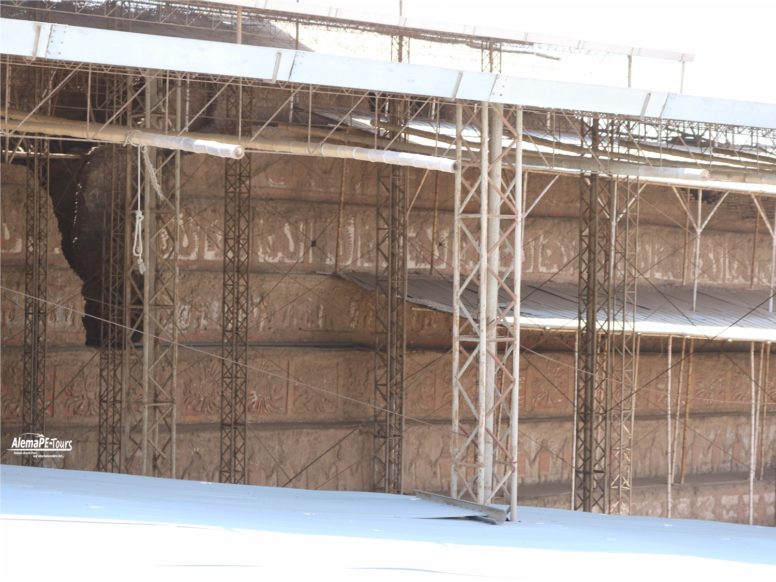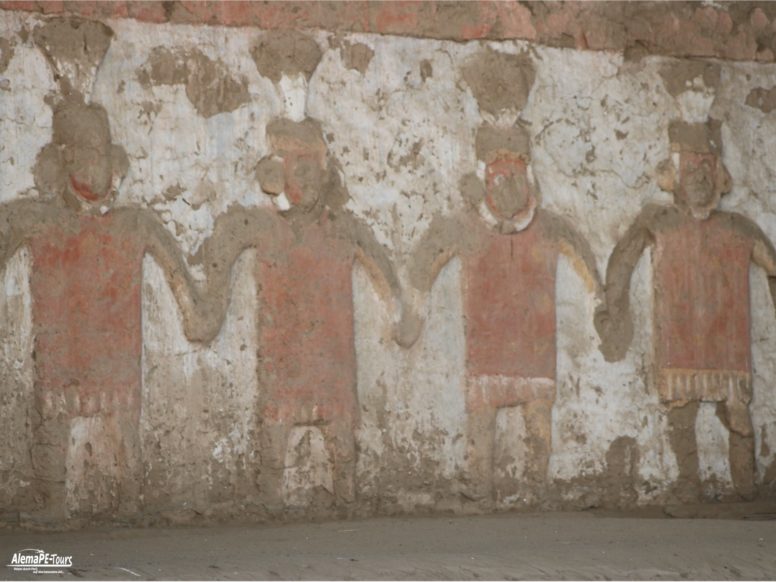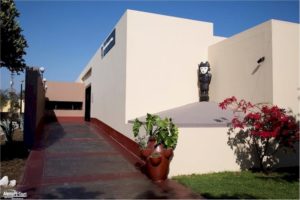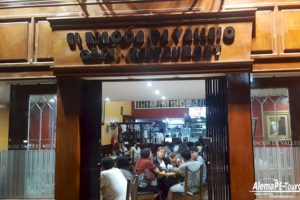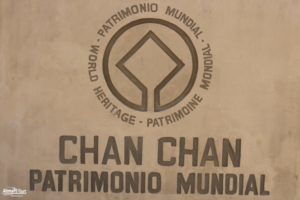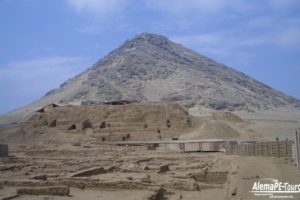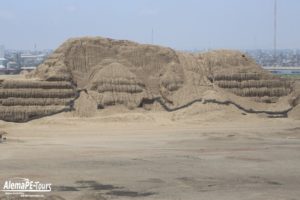Trujillo
Trujillo – Pyramids and colonial ambience
Trujillo is a city in coastal northwestern Peru and the capital of La Libertad Region. It is the third most populous city and center of the second most populous metropolitan area of Peru. It is located on the banks of the Moche River, near its mouth at the Pacific Ocean, in the Moche Valley. This was a site of the great prehistoric Moche and Chimu cultures before the Inca conquest and subsequent expansion.
The Independence of Trujillo from Spain was proclaimed in the Historic Centre of Trujillo on December 29, 1820, and the city was honored in 1822 by the Congress of the Republic of Peru with the title “Meritorious City and Faithful to the Fatherland”, for its role in the fight for Peruvian independence. Trujillo is the birthplace of Peru’s judiciary, and it was twice designated as the capital of the country. It was the scene of the Revolution of Trujillo in 1932. Trujillo is considered the “cradle of liberty and cradle of the judiciary in Peru”.
Trujillo is also known as the “City of Everlasting Spring”, is considered the “Capital of the Marinera”, a traditional dance in Peru, “Cradle of the Peruvian Paso horse”, as well as the “Capital of Culture of Peru”. It has sponsored numerous national and international cultural events, and has a lively arts community. Current festivals include the “National Marinera Festival”, the Trujillo Spring Festival and the International Book Festival, which is one of the most important cultural events in the country.
How to get to Trujillo
By Plane from Lima
By bus from Lima
- Take a bus to Lima (Civa, Cruz del Sur, Movil-Tours)
- The journey takes about 9 hours and is priced between 60 and 100 soles for the ticket.
By bus from Chiclayo
- In Chiclayo take a bus (Cruz del Sur).
- The journey takes about 4 hours and costs between 26 and 65 soles for the ticket.
By bus from Cajamarca
- In Cajamarca take a bus (Trc Express).
Other Routes
- Routes from Tumbes, Piura, Chiclayo or any city of the Peruvian north coast. Just take a bus (Civa, Cruz del Sur).
Points of interest
Trujillo is close to two major archeological sites of pre-Columbian monuments: Chan Chan, the largest adobe city in the ancient world, designated a World Heritage Site by UNESCO in 1986; and the temples of the Sun and Moon (the largest adobe pyramid in Peru).
The city center contains many examples of colonial and religious architecture, often incorporating distinctive wrought ironwork. It includes residential areas, a central business district, and industrial supply distribution to the various districts. The Roman Catholic Archdiocese of Trujillo has its seat here. Roman Catholicism is the predominant religion and 10 colonial churches are located within the old city wall, now encircled by Avenida España; additional churches in the towns of Huamán, Huanchaco and Moche are located within 15 kilometres (9.3 miles) of Trujillo’s centre.
Since 2011, the city has been developing the pilot project Trujillo: Sustainable City, as part of the platform “Emerging and Sustainable Cities of the Inter-American Development Bank”, in cooperation with the IDB. In 2012 Trujillo was selected by IBM to participate in a “Smarter Cities Challenge” project intended to improve public safety and transportation through technology.
Plaza de Armas de Trujillo
Also known as Plaza Mayor de Trujillo, highlights in its central part the Monument of La Libertad, sculpted by the German Edmundo Möeller, then armed by Enrique Albretch, and opened on July 4, 1929. In this square the Spanish foundation was made the city of Trujillo by order of Diego de Almagro. Like every square of Armas of province, it is the center of meetings and / or walks of the people of the place; from it you can see the Cathedral, the striking facades of the houses, hotels or surrounding government offices, all with beautiful colors. The Plaza de Armas de Trujillo is located in the Historic Center of the City.
Cathedral of Trujillo
This temple, also known as the Cathedral Basilica of Santa Maria, is the cathedral and main church of Trujillo, whose construction lasted 19 years was made in the second half of the seventeenth century. The infrastructure of this temple is characterized by its ceiling decorated with polychrome beams and the crypt adorned with murals of the apostles. In its interior the main altar stands out, in which it has the altarpiece that is considered the best work of the Trujillo carvers. It also conserves valuable works of art, especially canvases from the Cuzco school and sculptures, highlighting among them the canvases “The Transverberation” of Santa Teresa and Santo Toribio de Mogrovejo. The Cathedral of Trujillo is located in front of the Plaza Mayor (Plaza de Armas) in the historic center of Trujillo.
Cathedral Museum
The Cathedral of the City of Trujillo has in its interior the Cathedral Museum, where objects related to the liturgy, carvings and paintings of the colonial and viceroyal period are conserved. This museum was created on December 29, 1987, with the purpose of highlighting the evolution and history of the church. In the tours are divided into six sections, where visitors can see from the dress of the ancient cardinals, sculpture of saints, to mural paintings and canvases of anonymous painters of the seventeenth and eighteenth centuries. Between his main linen cloths they emphasize “The negation of San Pedro” and “The picture of San Juan Bautista”.
Church San Agustín
This temple dates from the 17th century, and was founded by the order of the Augustinians, although with time, it was administered by the Franciscans. Today it is one of the most beautiful temples of the city of Trujillo, and is considered a Monumental Heritage of the Nation. Inside, there is the main altarpiece, paintings of the apostles of Jesus Christ, the image of Saint Augustine and the pulpit, whose chair is Baroque style and the rococo-style tornavoz. The Church of San Agustín is located 100 meters from Trujillo’s Plaza de Armas, at Jirón Bolivar 508 (junction with Orbegoso).
Church Santo Domingo
It is one of the main and oldest catholic temples of the city, considered Historic Monument of Trujillo. It was built during the conquest of the Spanish, with the contribution of Indians and slaves. The infrastructure of the temple is of basilical type, in Latin cross plan with transept, presbytery, side chapels and choir. Inside, the main altarpiece, of baroque style bathed in gold leaf, which has three streets and two bodies, as well as the pulpit that has on top of the tornavoz, to Saint Vincent winged, made in gold leaf. This church is one of the three temples linked by tunnels that run under the main square and join other important mansions of the time. The Church of Santo Domingo is located at the junction between shreds Pizarro and Bolognesi, one block from the Plaza de Armas of Trujillo.
Church San Francisco
This baroque style temple dates from the 18th century. At the beginning the Church of San Francisco belonged to the order of the Franciscans, during the period of independence it was handed over to the National College of San Juan, ending later in the hands of the Carmelite order. Inside, the church has several masterpieces, among which the main altar, the polychrome altarpieces and the pulpit stand out. In terms of decoration highlight characters of the Holy Scriptures and passages of the lives of some saints. At present, the Teatro Colón operates in what was the convent that is next to the church. The Church of San Francisco is located at the junction of the Independencia and Gamarra shreds, very close to the Plaza de Armas.
Cultural Center of Trujillo
In this house was born the famous thinker and politician Víctor Raúl Haya de la Torre. This center is an institution of the Banco de la Nación Foundation, whose purpose is to disseminate the thought and work of this illustrious Peruvian politician, as well as Peruvian culture in its various manifestations. Inside it has five permanent exhibition halls, four transitory exhibition halls and a virtual transitory exhibition room, as well as a central patio, a library, a multipurpose room and another for conferences. The Cultural Center of Trujillo is located in the Jirón Orbegoso 652, very close to the Plaza de Armas of the City.
Museum of Zoology
This museum belongs to the National University of Trujillo, which exhibits a wide variety of animal species dissected (birds, fish, reptiles and insects) from all regions of Peru, in order to make visitors know the wealth of the national fauna to become aware of its care and protection. The Museum of Zoology is located in the Jiron San Martín 368.
Toy Museum
This museum is set in a colonial mansion, where the transformation of the toy through time is exhibited. These toys from various parts of the world reflect customs, fashions and socio-cultural parameters, which belonged to the collection of the plastic artist Gerardo Chávez, who acquired them in his travels and as a gift from his acquaintances. Later Chávez would create the Toy Museum, exhibiting specimens that correspond from pre-Hispanic times until 1950. The Toy Museum is located in Jirón Independencia 705, a couple of blocks from the Plaza de Armas de la Trujillo.
Museum of Archeology, Anthropology and History of the National University of Trujillo
This museum is located in the Casa Risco toasting, famous for its courtyards decorated with murals, and that keeps a harmonious relationship between the museography and the pre-existing architecture of the house. It has 10 rooms in which are exposed the archaeological remains linked to the different pre-Hispanic cultures that developed in the La Libertad region, as well as the development of the historical process of the north coast. Among its facilities include ceramic objects, goldsmiths, fabrics and feather art. The Museum of Archeology, Anthropology and History is located in Jr. Junín 682, Historical Center of Trujillo.
Casa Calonge or Casa Urquiaga
Headquarters of the Central Reserve Bank. It is a house of neoclassical style adapted as a museum, where gold ornaments of the Chimú culture are displayed, the desk of the Liberator Simón Bolívar and furniture belonging to the viceregal and republican eras.
Casa Ganoza Chopitea or Ramírez y Laredo
For many specialists it is the most representative of the architectural style of the city of Trujillo. The cover, of Baroque style, is characterized by the use of several shades of colors, its Rococo pediment and two lions. The Mannerist murals, the empire windows and the neo-baroque balcony complement the style of the house.
House of Emancipation or of Madalengoitia
In this place, the Marquis of Torre Tagle prepared the declaration of independence of Trujillo in 1820. It was the seat of the First Constituent Congress and, later, the house from which President Riva Agüero ruled. This house is also called the Civic Sanctuary of Trujillo. Exhibitions and cultural events are held.
Palacio Iturregui
Built in the 19th century, it is an example of neoclassical civil architecture. The columns, the window bars and the statues of Italian marble stand out. The Iturregui Palace is located at Jr. Pizarro 668.
Plazuela El Recreo
During the viceroyalty, the cover of this plaza marked the road to the mountains. It was restored in 1986 and houses the old pool that was originally in the Plaza Mayor. There you can see the box of water that supplied the Trujillo sites.
Traditional dishes
- Frejoles a la trujillana
- Pepián de pava
- Seco de cabrito con frijoles
- Shambar
- Sopa teologa
Trujillo – The Capital of Culture
Trujillo is considered the “Capital of Culture of Peru” for the prominent writers associated with the city such as Cesar Vallejo and Víctor Raúl Haya de la Torre, and because the city is a center for important cultural expressions as the marinera dance, Peruvian paso horses, caballitos de totora, Trujillo’s gastronomy, etc. The North Group was formed here, with Eduardo González Viaña and Gerardo Chavez as successors. The city presents important national festivals, such as Marinera Festival, Spring Festival, and competitions for the paso horse and caballito de totora.
About the History
The history of Trujillo has its beginning in ancient times, as the area at the mouth of the Moche River was long a center of successive pre-European cultures. They extended their domains along the northern coast of Peru.
Pre-Columbian era
The archaeological history of this region goes back to the early pre-ceramic period. For example, Huaca Prieta was occupied as early as 4700 BC. Several ancient cultures developed in this area: the Cupisnique, the Moche and Chimu. Numerous archaeological sites and monumental remains attest to the high degree of complexity of these civilizations. Among the Cupisnique culture sites are Caballo Muerto and Huaca Prieta.
The Moche culture sites include huacas: the Temples of the Sun and Moon[24] south of the city, the Huaca del Dragón (or Rainbow Huaca) and the Huaca Esmeralda to the north, and others. The Chimu culture built its primary settlement at what is known as Chan Chan, which was the capital, having an estimated 100,000 people at its peak. It is the largest pre-Columbian city built of adobe and has been designated a UNESCO World Heritage Site. Its remains are 5 km (3 miles) northwest of the current city center. The present Spanish–Peruvian city of Trujillo was founded in an ancestral territory populated by ancient indigenous civilizations. The Spanish founded new cities expressing their culture in what they called the “Viceroyalty of Peru”.
The Moche Civilization
The Moche civilization flourished in northern Peru with its Huacas del Sol y de la Luna from about AD 100 to 800, during the Regional Development Epoch. The people likely had formed into a group of autonomous polities that shared a common elite culture, as seen in the rich iconography and monumental architecture that survive today. They are particularly noted for their elaborately-painted ceramics, gold work, monumental constructions (huacas) and irrigation systems.
Moche history is broadly divided into three periods – the emergence of the Moche culture in the Early Moche (AD 100–300), its expansion and florescence during the Middle Moche (300–600), and the urban nucleation and subsequent collapse in the Late Moche (500–750). Moche society was agriculture-based, and the cultural leaders invested in the construction of a network of irrigation canals for the diversion of river water to supply the crops. Their culture was sophisticated; and their artifacts fully express their lives, including scenes of hunting, fishing, fighting, sacrifice, elaborate ceremonies, and sexual acts.
The Chimu Empire
The Chimu built and occupied a territory known as Chimor, with its capital at the city of Chan Chan, a large adobe city in the Valley of Moche (around which present-day Trujillo city developed). The culture arose about 900 and flourished into the 14th century. The Inca ruler Tupac Inca Yupanqui led a campaign which conquered the Chimu in around 1470.
This was just 50 years before the arrival of the Spanish in the region. Consequently, Spanish chroniclers recorded accounts of Chimu culture from persons who had lived before the Inca conquest. Similarly, archaeological evidence suggest Chimor emerged from the remnants of Moche culture; early Chimu pottery had some resemblance to that of the Moche. Their ceramics are all-black, and their work in precious metals is very detailed and intricate. In the Late Chimu period, about 12,000 artisans lived and worked in Chan Chan alone. They engaged in fishing, agriculture, craft work, and trade. Artisans were forbidden to change their profession, and were grouped together in the citadel according to their area of specialization. Archeologists have noted a dramatic rise in the volume of Chimu craft production, which they attribute to artisans having been brought to Chan Chan from another area taken in conquest. As there is evidence of both metalwork (generally a male specialty) and weaving (a female art) in the same domestic dwelling, it is likely that both men and women were artisans. The men engaged in fishing, heavy agriculture (aided by irrigation and earthworks), and metallurgy. The women made ceramics and textiles (from spun and dyed cotton, llama, alpaca, and vicuña wool). People used reed fishing canoes, hunted, and traded using bronze coins.
In May 2018 archaeologists uncovered the world’s largest child-sacrifice site at Trujillo. National Geographic reported that more than 140 children and 200 baby llamas appeared to have been ritually sacrificed, more than 500 years ago.
The Colonial Era
Trujillo was one of the first cities in the Americas founded by the Spanish conquistadors. They arrived in an area that had been inhabited and developed for thousands of years by the indigenous peoples. According to historian Napoleón Cieza Burga, the conquistador Diego de Almagro founded the first settlement in November 1534, calling it Trujillo of New Castile after Trujillo, the home city of Francisco Pizarro. It was founded among four Chimu settlements: Huanchaco, Huamán, Moche and Mampuesto, to create an alliance against the Incas. On November 23, 1537, King Charles I of Spain gave the town the rank of ‘city’ and the coat of arms that remains a symbol for the city; it was the first city in Peru to receive a coat of arms from the king. By 1544 Trujillo had around 300 homes and 1,000 inhabitants, and an economy booming from the cultivation of sugar cane, wheat, and other food crops and the raising of livestock.
The Spanish colonists welcomed a diverse array of religious orders from the time of its founding, and there was a boom in church construction in the city during the 16th and 17th centuries. In 1577 Pope Gregory XIII created the Diocese of Trujillo, and in 1616 construction work commenced on the cathedral.
On February 14, 1619, Trujillo was struck by an earthquake, resulting in the near-total destruction of the city and the deaths of around 400 of its inhabitants.
Rebuilding was slow. The people developed a devotion to Saint Valentine, on whose day the earthquake hit. The Jesuits opened a seminary and school for the education and training of priests; they also served as missionaries to the indigenous peoples, as they introduced Christianity.

